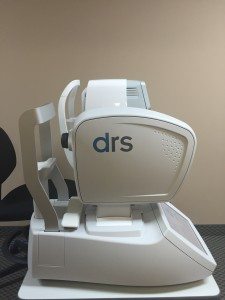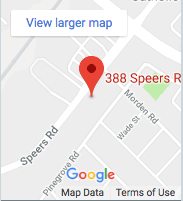
What to Expect During an Eye Exam
In the previous article, we discussed some of the many tests an optometrist makes to evaluate your overall eye health during a typical eye exam. The following are a few more tests your eye doctor will likely perform.
Slit-Lamp Examination
The slit-lamp, which is also called a biomicroscope, allows your doctor to see a highly magnified view of the structures of your eye so that he can assess your eye health and look for any signs of infection or disease.
You will rest your chin on a chin rest and light from a lamp will be shone in your eyes while the doctor looks through a set of oculars to examine every part of your eye. First she will examine the structures of the front of your eye, the lids, cornea, conjunctiva, iris, etc. and then, with the help of a high-powered lens, she will view the inside of your eye, the retina, optic nerve, macula and so on.
Many eye conditions and diseases can be detected through this exam, including cataracts, macular degeneration, corneal ulcers, diabetic retinopathy and more.
The Glaucoma Test
Glaucoma tests are designed to measure the pressure inside your eyes and have several variations. The most common glaucoma test is the “puff-of-air” test, which begins with you putting your chin on the machine’s chin rest. Nothing touches your eye and it is completely painless.
Based on your eye’s resistance to the puff of air, the machine calculates your intraocular pressure. High eye pressure may indicate glaucoma.
There are typically no warning signs of glaucoma until you’ve already suffered a significant loss of vision. Routine eye exams including a glaucoma test are essential for protecting your eyesight.
Pupil Dilation
Dilating drops enlarge your pupils so that your eye doctor has a better view of the eye’s internal structures. If you have risk factors for eye disease, this is a very important test because it allows for the most thorough evaluation of the health of the inside of your eyes.
The drops usually take about 20 to 30 minutes to start working. Once they take effect, your eye doctor will use various instruments to look inside your eyes. Bring sunglasses with you to your eye exam to minimize light sensitivity on your way home.
Visual Field Test
In some cases, your optometrist may want to check for the possible presence of blind spots in your peripheral vision by performing a visual field test. Blind spots such as these often originate from eye diseases like glaucoma. This test may also help to identify specific areas of brain damage caused by a stroke or tumor.
Other Eye Tests
Besides these common tests performed during a standard thorough eye exam, in some cases your eye doctor may recommend more specialized eye tests. Often you will be referred to another eye doctor, such as a retinal specialist, for such tests.

